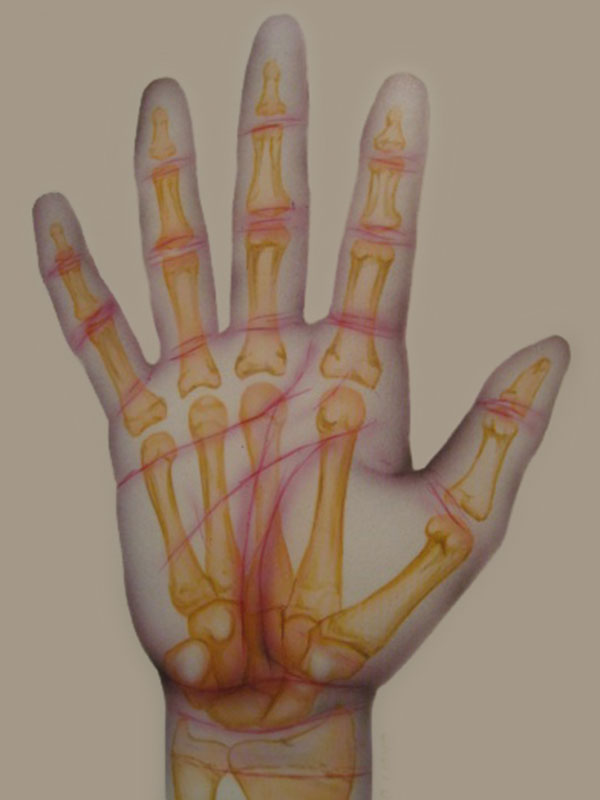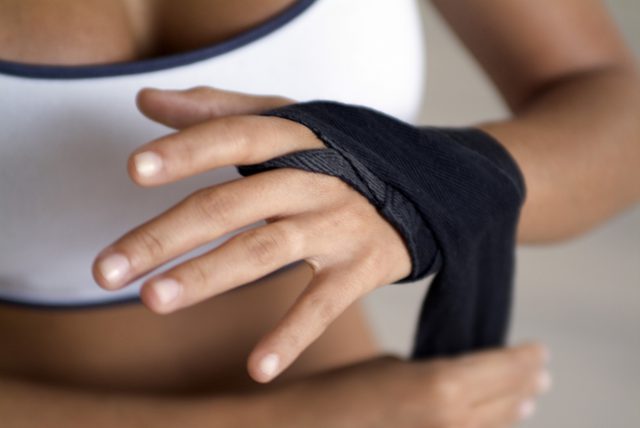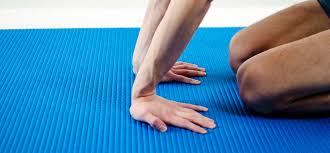Wrists aren’t necessarily high on the list of muscles that people like to “workout” most are more focused on their biceps, chest, abs, and so on. The forearms and wrists allow us to perform the exercises that develop and maximize those muscles. Therefore, it is imperative that we devote time and energy to optimize the strength of our hands, wrists, and forearms.

There are ten bones connected to the wrist joint. You’ve got the two coming in from your forearm (the radius on the thumb side and the ulna on the pinky side), and then eight coming in from the hand, which are called carpals. The bones and ligaments are supportive structures of course. But just as in anything, if they are not acclimatised to the forces of vigorous, repetitive training, they will lack the resilience to withstand injury. As such, ligament sprain and bone stress fractures are common problems. Improving the capacity of our wrist bones and ligaments takes consistent, progressive, and patient work.

The muscles of our forearms and wrists create the movements of flexion, extension, and radial/ulnar deviation. Hand rotations actually come from the elbow joints. So wrist “circle” exercises are a combination of elbow and wrist movements. Our forearm and hand muscles actually have a great potential for strength improvement, as again most of us tend not to use them to their full capability. Steady strength training for the wrists can lead to significant results. There are quite a few wrist conditions (strains, sprains, tendonitis, bursitis, TFCC tears, stress fractures) that can be improved with proper wrist conditioning.
The beginning of wrist conditioning work is ensuring you have the adequate wrist flexibility to perform your training safely. You want to be able to flex and extend your wrists to at least 90 degree angles without a lot of force for most training that loads your wrists. If your wrists can’t flex and extend properly, loading them with your bodyweight (or more) through training is like finding a stuck hinge and, instead of loosening it properly, just pushing harder and harder until something gives. There is also quite a bit of wrist strength-endurance needed to perform bodyweight exercise, especially in exercises involving some level of hand balancing. While the common recommendation for building wrist conditioning is to spend as much time on your hands as possible, you have to work up to it, especially if your wrists already hurt. If your wrists, already hurt you, you’re probably painfully aware of how much you depend on them. Sore wrists can make fun hand balancing moves look completely unreachable. Even a press up might seem out of reach.
Try out these flexibility wrist stretches to help ease your wrist pain and also to start getting them ready to be strengthened.
-
Starting on your knees with your hands out in front of, palms flat on the floor and your fingers pointed towards your knees
-
Same as above however with you palms facing towards the ceiling

Complete each stretch 3 times holding each for at least 10 seconds per time, if your wrists hurt to much to perform these stretches, try resting your hands on a higher surface such as a table. If this is still too hard start using a wall and gradually move towards the ground. Like I said earlier it takes patience to see results in your wrists especially if you have never strengthened or stretched them before.
Below are some other good wrist stretches you could also use
Prayer stretch
Start with your palms together in front of your chest. Slowly lower your palms (keeping them together) until your forearms form a straight line. This should look a little like you’re praying and you should feel a gentle stretch in your forearms. Hold this stretch for 30 seconds and repeat several times for best results.
Wrist flexor stretch:
Extend one arm in front of you with the palm facing up. Point your hand at the floor by bending your wrist — don’t turn your arm. Apply gently pressure with your other hand until you feel a moderate stretch. Hold for 30 seconds, then switch hands.
Wrist extensor stretch:
Extend one arm in front of your with the palm facing down. Point your hand at the floor by bending your wrist. Apply gentle pressure with your other hand until you feel a moderate stretch. Hold for 30 seconds, then switch hands.

Once you are no longer in pain it’s important to strengthen your wrists to avoid re-injurying them and to look after them so you can live a better life
Wrist Strengthening Exercises
Wrist Curls
Perform this with either a bar or dumbbells. Sit on a bench or chair and rest your forearms on your knees. Hold the bar or dumbbells with an underhand grip, so that your palms face up. Relax your wrists so they drop as far as possible toward the floor, and then raise the bar up and back toward you, while keeping your forearms down on your knees.
Reverse Wrist Curls
Perform this with either a bar or dumbbells. Sit on a bench or chair and rest your forearms on your knees. Hold the bar or dumbbells with an overhand grip, so that your palms face down. Relax your wrists so they drop as far as possible toward the floor, and then raise the bar up and back toward you, while keeping your forearms down on your knees.
Wrist Rolls
Perform this exercise with a stick that has a rope attached to the middle, and a weight attached to the other end of the rope. Grab the stick with an overhand grip toward each end of the stick. Using only your forearms and wrists, roll the rope around the stick until the weight reaches the stick, then roll the rope off the stick until the weight reaches the floor.
Wrist Rotations
Perform this with dumbbells. Sit on a bench or chair and rest your forearms on your knees. Hold the dumbbells with an underhand grip so that your palms face up. Keeping your forearms on your knees, rotate the dumbbells inside until your palms are facing down. Perform each exercise for 8 repetitions and 3 sets
Don’t let your wrists and forearms be your weak link. Take the time to develop them. It will pay off in more ways than you may realize.


